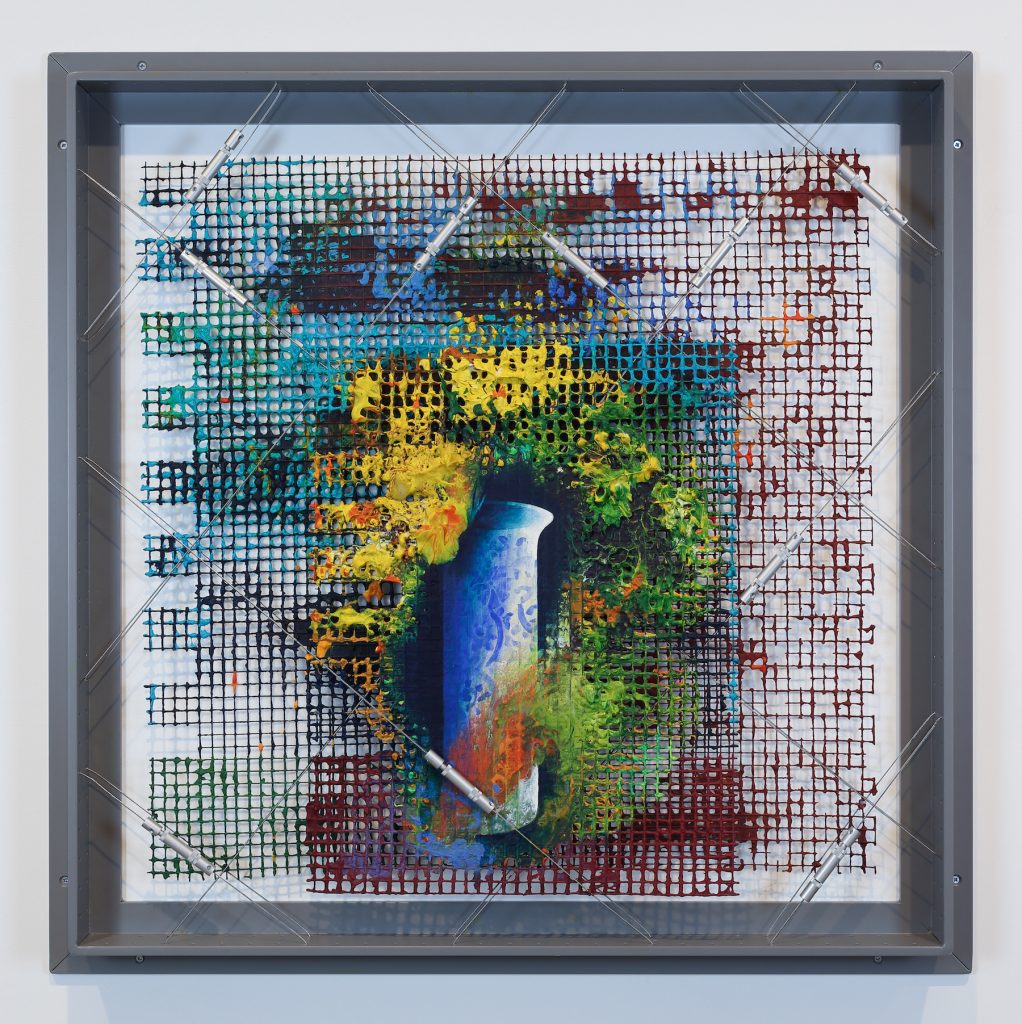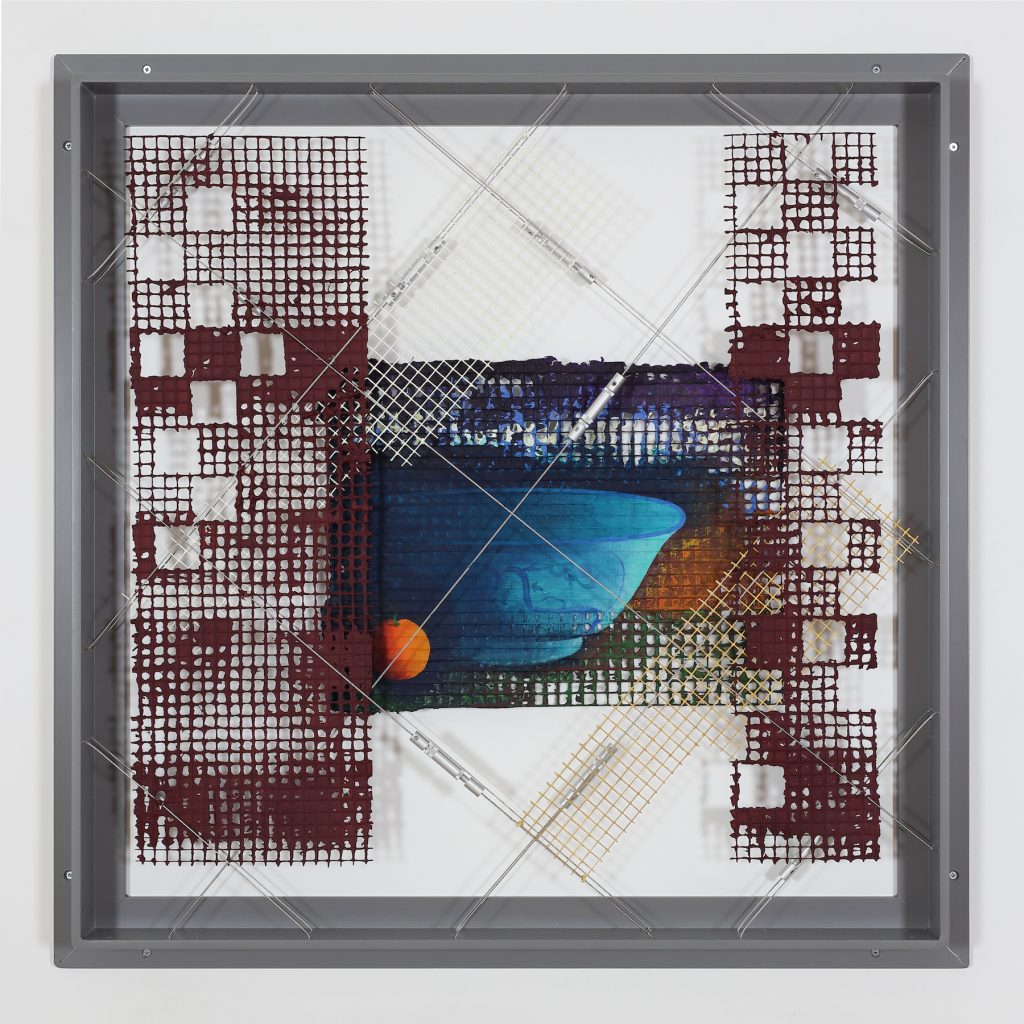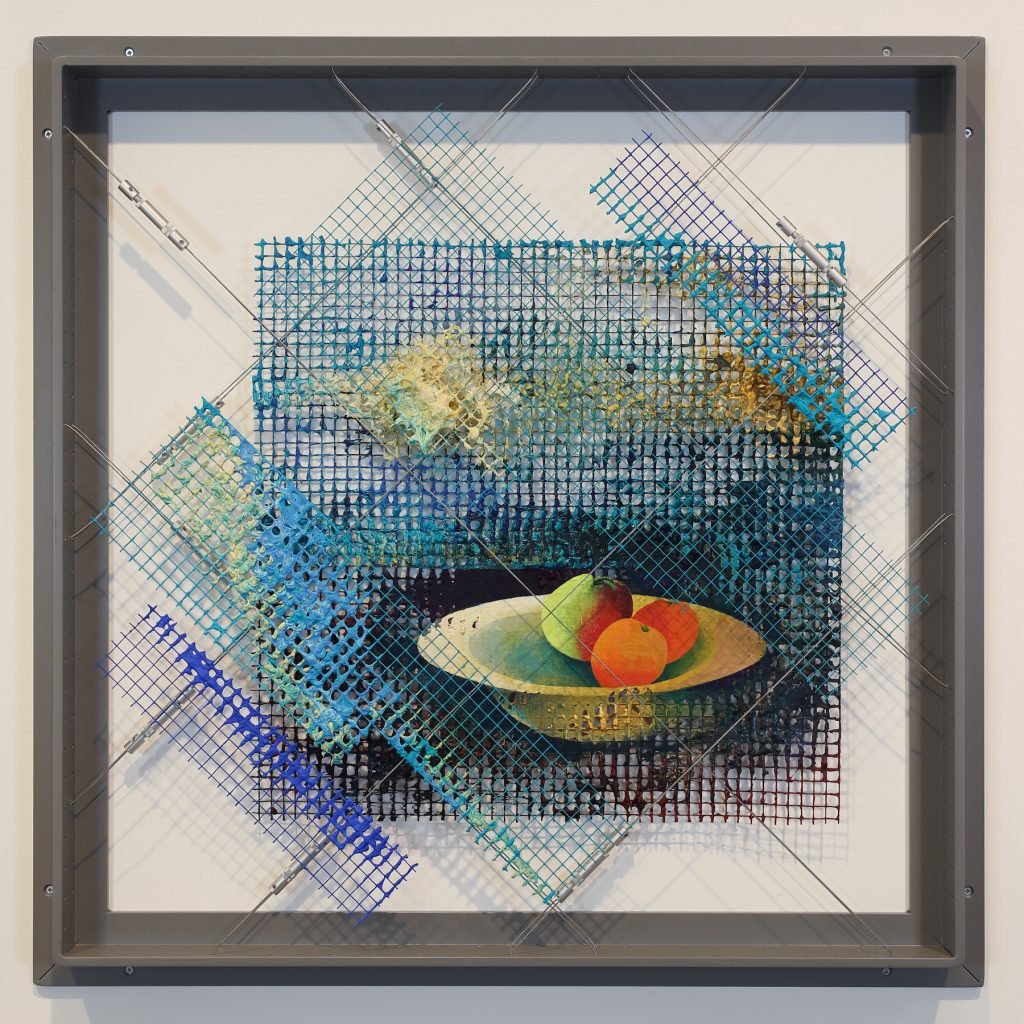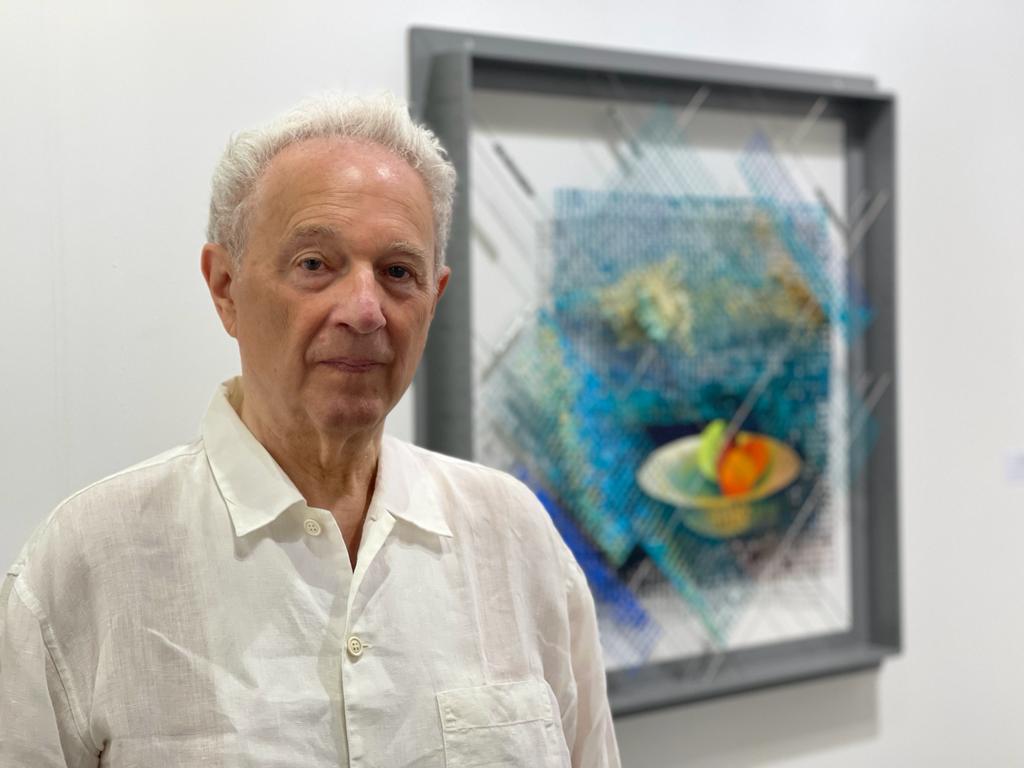Art dealer Bernard Jacobson has been working at the center of the art world for more than 50 years and, over those decades, has developed strong opinions about what it takes to be a great artist.
Jacobson opened his eponymous gallery in London in 1969 at the height of the counterculture movement. In its earliest years, the gallery focused on prints, working with many of the most influential artists of that generation, including Lucian Freud, David Hockney, Ed Ruscha, and William Tillyer.
In the two decades that followed, the gallery expanded into painting and sculpture and more firmly branched into showing American art, with exhibitions dedicated to Larry Bell, Kenneth Noland, and Frank Stella, opening outposts in Los Angeles and New York.
But Jacobson describes his 50 years in the art world as 50 minutes, and he has an adopted a view of art history that sees 15th-century master Piero Della Francesca as more closely linked to Georges Braque or Andy Warhol than one might suspect.
Earlier this spring, Jacobson penned an “open letter” circulated by email to the art world asking whether or not William Tillyer (b. 1938) could now be categorized as one of the great British contemporary artists. Jacobson argues that these classifications expand beyond matters of taste and are rooted in questions of cultural influence and “astonishing vision.” The letter was spurred by Jacobson’s viewing of Tillyer’s most recent works, which will be exhibited at the London gallery in the fall of 2023.
For Jacobson, Tillyer, who he has been working with since the late 1960s, meets the threshold of greatness, but he comes to this conclusion through a wide-ranging consideration of the state of art today. (In his estimation: it’s not good.) Recently, we caught up with Jacobson, who shared his impassioned thoughts about why he wrote his letter, how he thinks artists should live, and why greatness never dies.
In late spring of this year, you penned an open letter to the art world which centered itself around the question of whether British artist William Tillyer could be considered one of the “great” artists of our time. The letter subsequently delved into considerations of how artists related to one another over generations and what it means to be truly challenging as an artist. Can you tell us why you felt the need to write the letter now?
I wrote the letter after seeing William Tillyer’s newest paintings, which we’ll be showcasing at the gallery next September. I had actually written another letter to the art world about 10 years ago after first seeing 200 breath-taking watercolors that Tillyer had produced and feeling totally jubilant about them. The response to that first letter was so inspiring and wonderful, I felt the time was ripe for yet another letter. The response this time has been even more generous and supportive. I also found my letter necessary to write as I am so anxious about the level of art being made these days. I felt someone should stand up and shout: “Help! Art is mediocre at best and uninspired and feeble and not needed.”

William Tillyer, Miss Hanks Vase with Arrangement (2022) from the “Mulgrave Tensile Wire Works” series. Courtesy of Bernard Jacobson Gallery.
Why does the question of “greatness” interest you? You say you believe it goes beyond the subjective.
I have thought long and hard and I feel I have been generous yet critical. It seems that no artist is pushing himself or herself to explore new territory or attempt to go deeper into their subject. There is a feeling of malaise. If an artist has a big reputation and following, he will not rock the boat but simply do more works like the last ones. Different colors and sizes are far from being enough. Artists need to go deep inside themselves and, as Albert Camus so brilliantly put it, “create dangerously.”
Doing versions of the same paintings creates stagnation and sadness. Art (painting, sculpture, writing, music, etc), lifts our spirits and positively questions our reason for being. Money is simply of no interest! Art is above money and fame and success and the emptiness of power. Sorry to quote a Frenchman again, but follow the great words of André Gide: “Please do not understand me too quickly.” Utter magic!
In your letter, you consider what it is that makes an artist masterful and consider the legacies of the Post-Impressionists, Picasso, and Warhol as starting points. Two factors you consider are an innate “astonishing vision” as well as the influence these artists had on generations to follow. I wonder: Do you think such qualities are timeless? Do you think what might be concerned “extraordinary” now might not seem so in the future? In what ways do these qualities go beyond “matters of opinions,” as you put it?
These artists’ paintings do what art should do: The artist questions himself. He goes where neither he nor we have been before. As Braque took over from Cézanne’s unfinished project, so Tillyer continues where Braque left off. But not in an easy and safe and timid way. Going where even angels fear to tread! Creating dangerously!
I asked Tillyer to help explain the reason for making these paintings. He said he didn’t know himself. If he doesn’t know, then how am I meant to know, and how is his public meant to know?
As Braque said, “There is only one thing valuable in art: The thing you cannot explain.” Perfect! Truly splendid! Art is not illustration. Art is not journalism. Art is not cheap sensationalism. It is deep and, by its very nature, beyond our own times.
I notice how people who buy art just don’t have time. Those people who look and learn and love just don’t have any money.

William Tillyer, The Percival David Bowl (2022) from the “Mulgrave Tensile Wire Works.” Courtesy of Bernard Jacobson Gallery.
You acknowledge the relativity of time, noting that 50-plus years you’ve spent in the art world can seem like a mere moment in the grand scheme of things. In your own career, how have you experienced this passing of time?
We can consider in terms of Tillyer’s career. His lifetime’s work is seen through a grid, primarily, the interconnectedness of our lives—our very existence, our desire, our need for joy, and how wonderful life is.
If a painting or sculpture speaks to you today, straight from the artist’s studio, it is probably not going to survive tomorrow. If art is not ahead of its time, then it is minor or more than likely useless.
Mesopotamia, ancient Egypt, ancient Greece, ancient Rome, the Renaissance, the painting miracles of Dutch canvases from the 17th century, and the arrival of the domination of French art, until New York took over for a brief period. Fifty years is 50 minutes.
A journalist once naively asked Einstein how he became a genius. He replied that he stood on the shoulders of earlier geniuses. That is where art belongs, and where it should attempt to continue to go! The artist is a humble being, a craftsman, a philosopher, and a poet all rolled into one.
How do artists maintain their visions and ambitions within these scopes of history, knowing so few are remembered?
An artist should try his hardest and be humble and push himself to exhaustion. It is an adventure, which, in time, becomes ours—Piero, Raphael, Poussin, Cézanne, Braque, plus many others, give, give, give. Don’t take—even if you get hurt in the process. That is all part of the adventure. It is the artist’s indulgence and the great talent he has been blessed with should be respected and protected and passed on to future artists. Generosity of spirit! And you will get hurt!

William Tillyer, Two Oranges and an Apple (2022) from the “Mulgrave Tensile Wire Works” series. Courtesy of Bernard Jacobson Gallery.
Does William Tillyer merit this classification of a “great Britsh artist” in your opinion and why?
For more than 50 years, Tillyer has been allowed his freedom—to eat and have a room over his head, to protect his family, and to make endless miracles, which take a great amount of time to understand and love. I gave him that freedom and that was my choice and my pleasure and my gift to a great artist—a very, very rare artist. He expects virtually nothing back in return. He challenges himself every single day and in turn challenges me. But his great honesty and his god-given gift are everything.
Recently, museums and other institutions have been re-evaluating who the pantheon includes and excludes. Do you think these historical artists will further shift in our over time?
I think that the history of art will indeed continue. Fads and fashions come and go. But there will always be greatness. It is up to us to see it. I rarely meet a person who creates the aura of the art world—critic, art museum member, or collector—who has his or her own opinions. When the great art critic, Harold Rosenberg, coined the expression, “the herd of independent minds,” he wrote sheer poetry. I am angry and depressed by the poor standards that the current art world has adopted and accepted.
You mention artists handing one another a baton across time. In this world of art, what role does the dealer play? What do you see as your own legacy and what do you hope to “hand on” as lessons to future generations?
The dealer is simply the conduit, from the artist to his eventual public. In my case, very few artists have that magic to create deeply enough to get me out of bed in the morning and rush to my gallery. Thank god for the saints like Piero, through to Braque, Matisse, and Tillyer in modern times. And, most important of all, there hopefully will be tomorrow’s artists…










